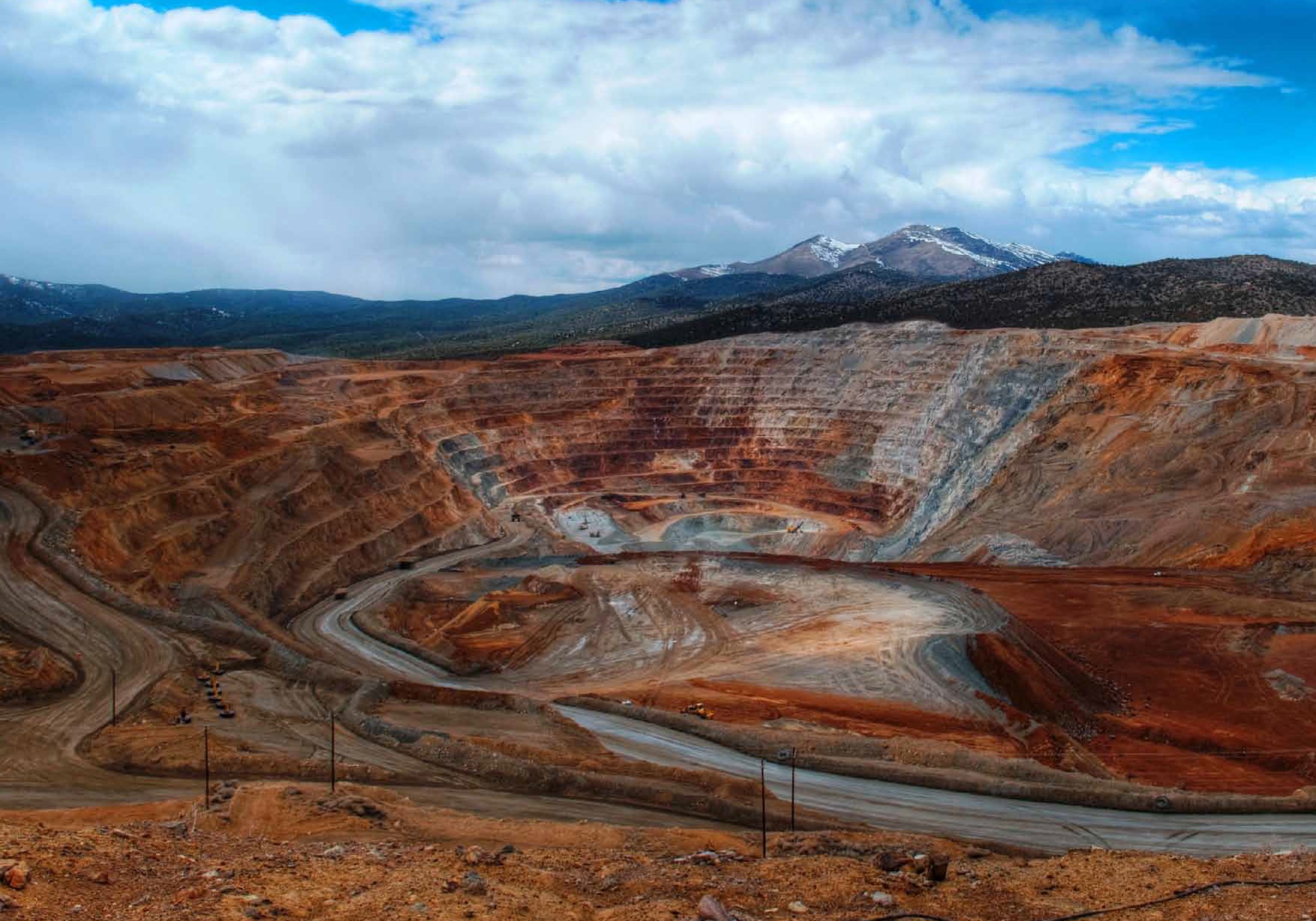
One of Poland’s biggest companies has embarked upon a campaign of global expansion, positioning it among the world’s largest copper and silver producers and paving the way for future growth.
KGHM is situated in the Legnica-G┼éogów copper belt, on one of the largest copper and silver deposits in the world. Discovered in 1957, the deposit is formed from accumulated copper sulphates occurring in sandstone, copper-bearing shales and carbonate rock, which lie deep underground. KGHM began to mine the deposit in 1961 as the Polish state mining company Kombinat Górniczo-Hutniczy Miedzi.
The company’s basic operations are those of copper ore mining, copper production and the production of precious metals and other non-ferrous metals. KGHM’s production structure comprises three mines, two copper smelters, a wire rod plant and auxiliary units supporting the core business. It currently employs over 18,000 people, with its subsidiaries employing another 10,000.
The mines operate at depths of between 600 and 1,300 metres, with some shafts being deepened to 1,400 metres in order to access ore lying even further down. It’s a challenging environment, according to business development manager Krzysztof Kubacki, who says the company’s ability to achieve volume and tonnage while working at depth sets it apart from its competitors.
“The KGHM mines are unique because they are very deep underground and the working conditions down there are not easy,” he explains. “It’s very warm, and there are a lot of technical and technological challenges that we have had to overcome. If you look at typical copper mining companies in the top 20 on a global scale, they usually mine open-pit large porphyry deposits and that’s where they get their volume and tonnage from.”
By contrast, KGHM mines sediment-hosted stratiform deposits deep underground that are not very thick in relative terms—usually between two and four metres—so in order to achieve tonnage and volume, a lot of infrastructure, deep shafts and hoisting capacity is required. “So we think KGHM is unique, because we still manage to produce a lot of copper from this style of deposit,” says Kubacki.
Following the fall of the Iron Curtain in 1989, the company began to turn towards the free market economy and started thinking about expanding beyond Poland. The state-owned enterprise transformed into a public-listed company—though this took some time, with the IPO taking place in 1997—and it began to consider its next move. “During the next decade, we developed a strategy to expand out of Poland,” explains Kubacki. “We wanted to grow our copper production because with the profits and the cash flow we were generating from our domestic sources, we could invest them into other deposits. However, there is only limited ability to do that in Poland, because there aren’t very many other deposits—or at least, they are not low-cost because they are similar in style to what we mine today. So we set out a strategy in 2009 that stated our aims to expand further afield, and we have taken that very seriously.”
In expanding beyond Polish borders, the company’s vision was to become a major, global copper producer by increasing copper concentrate production to 700,000 tonnes per year. And it quickly took giant leaps towards that goal with the acquisition of a stake in the Afton-Ajax copper gold deposit in British Columbia in 2010, followed by the acquisition of Quadra FNX at the end of last year.
The acquisition of Quadra FNX will undoubtedly transform KGHM. “We are acquiring a company which has access not only to operating mines but more importantly, to very attractive and prospective copper deposits,” explains Kubacki. One such deposit is Sierra Gorda in Chile, one of the largest undeveloped copper projects in the world. The mine is under construction and will start producing copper in early 2014 as a joint venture with Sumitomo from Japan. Once the mine comes into production it will generate over 200,000 tonnes of copper per year: KGHM’s current production from mining is approximately 420,000 tonnes of copper each year. “We will add significant amount of production just from this one deposit,” asserts Kubacki.
Another project acquired from the Quadra FNX deal is the Victoria Project in the Sudbury basin in Ontario, Canada. This is a totally different type of deposit from Sierra Gorda, which is a large porphyry-style copper deposit: Victoria is an underground copper, nickel and PGM deposit similar to other deposits being exploited in the Sudbury basin. “This project will also provide us with low-cost production of copper, nickel and PGMs and it should be in production by 2017,” states Kubacki. “So in general, if you look at the acquisition of Quadra FNX, it will transform KGHM from being quite a high-cost producer into a medium-cost producer.” An integral part of KGHM’s strategy was not only to grow its production but also to reduce production costs. “Given a downturn in the market, the producers who have competitive costs are the ones who will survive,” says Kubacki.
The Quadra FNX acquisition was by far the biggest M&A transaction made by any Polish company in the country’s history, so no-one can blame KGHM for now wanting to channel all of its energies and finances into bringing these three exciting overseas deposits—Sierra Gorda, Victoria and the Afton-Ajax project—into production, rather than looking around for new opportunities. “But opportunities come when they come,” says Kubacki, “and you cannot forecast ahead and say you’ll make more acquisitions several years from now: it doesn’t work that way. Having said that, what we want to do right now is focus on building our mines; but we will perhaps look for opportunities where we can invest in stages, rather than spend a large amount of money up-front.”
The company has, however, diversified by investing in non-core business areas such as the power generation sector; and has also established KGHM (Shanghai) Copper Trading Company to increase its copper sales to China.
As KGHM grows and expands, then so does the remit of its responsibilities; but corporate social responsibility is not a new concept to the company. “We’ve been mining deposits for over 50 years in this area and corporate social responsibility was always part of what we did: maybe in the 70s, 80s or even 90s, nobody called it that—but we were already doing the work,” says Kubacki. “KGHM takes a lot of pride in what it has been able to accomplish through its corporate social responsibility activities in this area.”
The evidence is all around to see, says Kubacki. The Polish copper basin is populated by towns and cities that boast schools, churches and hospitals occupying renovated, refurbished or completely new buildings. “Given the size of our operations here, we try to be involved with and support all kinds of activities,” he says. “For example, we spend a lot of money on education by supporting schools and students, and we also spend a lot of money on healthcare.” In fact, KGHM owns Miedziowe Centrum Zdrowia (MCZ), which has a local hospital in Lubin and offers excellent services in specialist areas such as cardiology.
The company also supports cultural and sporting activities: it sponsors festivals and cultural events, and helps fund the renovation of certain heritage sites in and around the copper basin. It also owns a football club in Lubin—Zaglebie Lubin—which plays in the first division. “We are very proud of our long-term commitment to supporting that team, but we also support a lot of other activities—we try to be involved in the local community in a very positive way.”
According to Herbert Wirth, the CEO of KGHM, there are many who doubted that the company would come good on its promises to expand and deliver on its expansion strategy. “KGHM set out this development strategy in 2009 and we were very serious about implementing it, because a lot of people doubted it,” Wirth says. “We have now demonstrated that we are capable of delivering, and I think this will influence the company positively.
“We have a very bright future ahead of us with all our mines and deposits, not only in Poland but further afield, and I hope KGHM can keep developing, keep growing and become an increasingly efficient company,” he concludes.
Written by Becky Done; research by Abi Abagun
DOWNLOAD
 KGHM-EMEA-July12-Bro-s.pdf
KGHM-EMEA-July12-Bro-s.pdf













